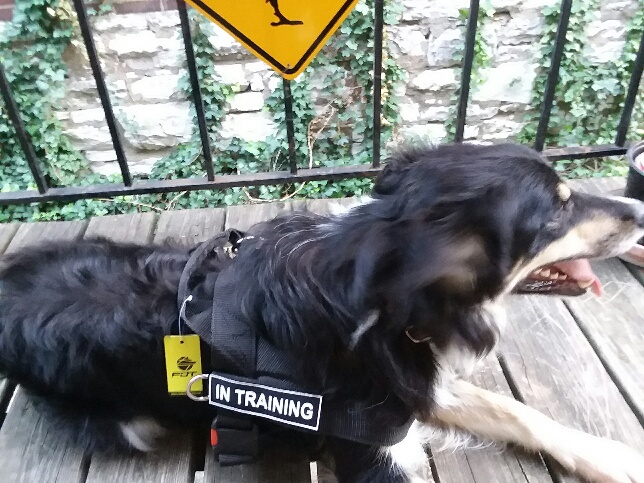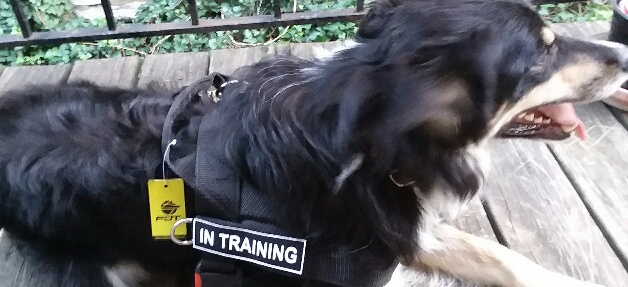Hello! Some of you may remember me as far back as Patch and then more recently blogging for Doug Miner for 40 South News. I am back after being away for health and out of state family issues. All is well and I am happy to be back.
And just in time. My phone rings off the hook this time of year for pets reacting to spring thunder storms and yes, you guessed it, Fourth of July fireworks. When I first moved here to St. Louis and now recently returning to the same South city area, I have gotten used to the “4th of July” actually starting the last few weeks of June and sometimes extending into late August, only to repeat such a spread for the so called: “First of the Year”. Nowadays many trainers and professionals write about how to prepare your pet for such confusing and frightening episodes. Frequent advice is to never leave the pet alone (cats, parrots, pocket pets, and yes – even the ever more popular pet chickens – ) can all suffer fear and distress at the noise, the smell and the lights. Having someone stay with them, covering windows and or crates and cages, and leaving on a soothing sound machine or loud TV or radio to mask the noise is often sagely advised.
However, less is written about the aftermath. Many pets who venture outside are extra edgy and wary and may act unpredictably, accordingly. ANY pet that goes out should ALWAYS be supervised and contained, be it by safe and reliable fencing, leashes and harnesses, or outdoor coops, cages or aviaries. Animals should be identified by collars or harnesses with ID tags. Mine have my cell phone, my name and my pet’s name, and on the other side, my vet clinic and their 24 hour emergency number.

And lucky me. Just last Thursday I was helping a friend on his farm in Black Jack, 45 min from my home. I have a relatively new dog, a young 18 month old Border Collie in training for me for my newest Canada goose working dog. I left him securely tied on his stake with his 14 year old “sister” and ran inside for a snack. A few minutes later my phone rang with a New York number. To my shock, an unknown voice asked for “Dorene” and informed me that he had “Beans”.
I was confused, then dumbfounded to realize that my new dog had chewed through his chew proof tie out lead (proof that even the best laid plans can go awry) and had run away into a strange neighborhood that even I did not know! My friend knew where the caller was (the caller, being from New York, had no idea where he and my dog were) and within minutes we had my dog safely back. I had that tag made for him before I drove to pick him up in Arkansas, where he had come from South Texas. Clearly, this dog has no idea where he belongs yet and would have had NO idea how to get home, and had crossed a very busy road to get to where he was found. Lucky everybody that he was wearing ID and the quick thinking traveler called and got me right away.
Other forms of ID are tattooing (less popular these days), although I have rescued tattooed birds – now very out of fashion – and all of my Border Collies have come tatooed. Livestock can be tattooed or branded. Far more popular and arguably more humane is microchipping, although the owner must make sure that the information is transferred to their name and contact number and keep that information updated. Not all microchips are read by the same devices, so daily visits and contact with shelters and rescue facilities are highly recommended until your pet is returned. Signs and adds and contact with such neighborhood regulars such as mail people or school bus drivers often successfully help identify lost pets.
To avoid this mishap, be sensitive to your pet’s emotions. They might remain agitated for a few days after the excitement, shown by nervous or unusual behaviors, being off their feed or daily routine and sleep habits, or exhibiting such out of character behaviors like jumpiness, excessive reactivity, or ritualistic, stereotypic behavior such as pacing, panting, or even lethargy. As always, if these behaviors persist or become serious (vomiting or diarrhea, for example,) a call or a trip to your vet is advisable.
If you have any questions or concerns, please feel free to contact me. I can assist with any cats, dogs, birds, exotics and our barn yard buddies. Dorene Olson, animal trainer and behavior consultant.


I have worked with Dorene off and on over the last 20 years with my pets. She always gives me great advise and homework (yes homework) to do with them to make their training a success. I would recommend her if you are in need of a great trainer!
Comments are closed.